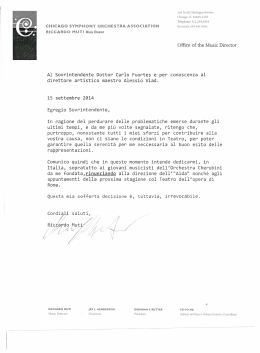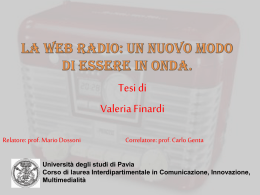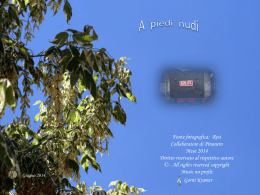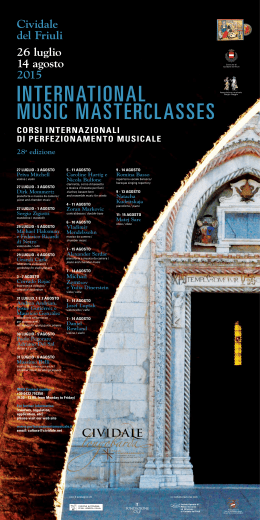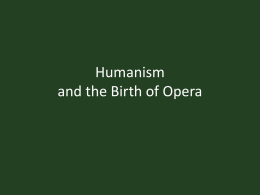n° 203 – 02 July 2015 Neuroimage 2015 May 19;117:267-283 A single dual-stream framework for syntactic computations in music and language Musso M1,2, Weiller C1,2, Horn A1,2, Glauche V1,2, Umarova R1,2, Hennig J3, Schneider A4, Rijntjes M1,2 1 Freiburg Brain Imaging, University Hospital Freiburg, Germany; 2 Department of Neurology, University Hospital Freiburg, Germany; 3 Department of Radiology, Medical Physics, University Hospital Freiburg, Germany; 4 Institute of Musicology, University of Hamburg, Germany. [email protected] This study is the first to compare in the same subjects the specific spatial distribution and the functional and anatomical connectivity of the neuronal resources that activate and integrate syntactic representations during music and language processing. Combining functional magnetic resonance imaging with functional connectivity and diffusion tensor imaging-based probabilistic tractography, we examined the brain network involved in the recognition and integration of words and chords that were not hierarchically related to the preceding syntax; that is, those deviating from the universal principles of grammar and tonal relatedness. This kind of syntactic processing in both domains was found to rely on a shared network in the left hemisphere centered on the inferior part of the inferior frontal gyrus (IFG), including pars opercularis and pars triangularis, and on dorsal and ventral long association tracts connecting this brain area with temporo-parietal regions. Language processing utilized some adjacent left hemispheric IFG and middle temporal regions more than music processing, and music processing also involved right hemisphere regions not activated in language processing. Our data indicate that a dual-stream system with dorsal and ventral long association tracts centered on a functionally and structurally highly differentiated left IFG is pivotal for domain-general syntactic competence over a broad range of elements including words and chords. Questo studio è il primo che compara la distribuzione spaziale specifica della connettività anatomica e funzionale delle risorse neurali, che attivano e integrano le rappresentazioni sintattiche durante l’elaborazione della musica e del linguaggio in uno stesso soggetto. Combinando la fMRI con la connettività funzionale e la trattografia probabilistica con tensore di diffusione, gli Autori hanno esaminato il circuito neurale coinvolto nel riconoscimento e nell’integrazione delle parole e degli accordi che non erano gerarchicamente connessi alla sintassi precedente, ovvero quelli che deviavano dai principi universali della relazione grammaticale e tonale. È stato dimostrato che questo livello di elaborazione sintattica, in entrambi i domini, si basa su un network condiviso nell’emisfero sinistro centrato nella parte inferiore del giro frontale inferiore (IFG), che include la pars opercularis e la pars triangularis, e sui tratti lunghi associativi dorsali e ventrali che connettono questa regione del cervello con le regioni temporo-parietali. L’elaborazione del linguaggio utilizzava alcune regioni adiacenti all’IFG nell’emisfero sinistro e le regioni mediali temporali più dell’elaborazione della musica, mentre l’elaborazione della musica, a sua volta, coinvolgeva anche le regioni dell’emisfero destro che non venivano attivate dal linguaggio. I dati indicano che per la competenza sintattica di dominio generale su un vasto gruppo di elementi, che comprende le vocali e gli accordi, è fondamentale un sistema a doppio percorso con i tratti lunghi associativi dorsali e ventrali centrati su una parte dell’IFG altamente differenziata dal punto di vista strutturale e funzionale. J Voice 2015 Jun 17. pii: S0892-1997(15)00107-1 The effect of timbre, pitch, and vibrato on vocal pitch-matching accuracy Duvvuru S, Erickson M Department of Audiology and Speech Pathology, University of Tennessee Health Sciences Center, Knoxville, Tennessee, USA. [email protected] This study seeks to examine how target stimulus timbre, vibrato, pitch, and singer classification affect pitch-matching accuracy. This is a repeated-measures factorial design. Source signals were synthesized with a source slope of -12 dB/octave with and without vibrato at each of the pitches, C4, B4, and F5. These source signals were filtered using five formant patterns (A-E) constituting a total of 30 stimuli (5 formant patterns × 3 pitches × 2 vibrato conditions). Twelve sopranos and 11 mezzosopranos with at least 3 years of individual voice training were recruited from the University Of Tennessee, Knoxville, School of Music and the Knoxville Opera Company. Each singer attempted to match the pitch of all 30 stimuli presented twice in a random order. Results indicated that there was no significant effect of formant pattern on pitch-matching accuracy. With increasing pitch from C4 to F5, pitch-matching accuracy increased in midpoint of the vowel condition but not in prephonatory set condition. Mezzo-sopranos moved toward being in tune from prephonatory to midpoint of the vowel. However, sopranos at C4 sang closer to being in tune at prephonatory but lowered the pitch at the midpoint of the vowel. Presence or absence of vibrato did not affect the pitch-matching accuracy. However, the interesting finding of the study was that singers attempted to match the timbre of stimuli with vibrato. The results of this study show that pitch matching is a complex process affected by many parameters. Questo studio vuole esaminare il modo in cui il timbro, il vibrato, l’altezza e la classificazione di uno stimolo da parte di un cantante possa influenzare l’accuratezza di imitazione dell’altezza. Lo studio si basa su un disegno sperimentale fattoriale a misure ripetute. I segnali di sorgente sono stati sintetizzati con una pendenza di -12dB/ottava con e senza vibrato per ciascuna delle note, C4, B4, e F5. Questi segnali di sorgente sono stati filtrati usando cinque pattern formanti (A-E) a costituire un totale di 30 stimoli (5 pattern formanti x 3 note x 2 condizioni di vibrato). Dodici soprano e 11 mezzo soprano con almeno 3 anni di istruzione vocale individuale sono stati reclutati dalle scuole dell’Università del Tennessee, Knoxville, la Scuola di Musica e la Compagnia dell’Opera di Knoxville. Ogni cantante doveva imitare l’altezza di tutti e 30 gli stimoli presentati 2 volte e in ordine casuale. I risultati indicano che non c’era alcun effetto significativo dei formanti sull’accuratezza di imitazione dell’altezza. Con le altezze in aumento da C4 a F5, l’accuratezza di imitazione migliorava nel punto di mezzo della condizione vocale ma non nella condizione prefonatoria. I mezzo soprano procedevano verso una maggiore accuratezza tra la fase prefonatoria e il punto medio della vocale, mentre i soprano risultavano più intonati a C4 nella fase prefonatoria ma diminuivano l’altezza a metà della vocale. La presenza o l’assenza di vibrato non influiva sull’accuratezza di imitazione dell’altezza. In ogni caso, l’osservazione più interessante dello studio è legata al fatto che i cantanti tentavano di imitare l’altezza dello stimolo attraverso il vibrato. Evidentemente l’imitazione delle altezze è un processo estremamente complesso che viene influenzato da molti parametri. Neuropsychologia 2015 Jun 24. pii: S0028-3932(15)30077-4 Excitability of the motor system: a transcranial magnetic stimulation study on singing and speaking Royal I1,2,3,4, Lidji P2, Théoret H1,4, Russo FA5, Peretz I1,2,3,4 1 Department of Psychology, Université de Montréal, Montreal, Quebec, Canada; 2 International laboratory for brain, music and sound research (BRAMS), Université de Montréal, Montreal, Canada; 3 Center for Research on Brain, Language & Music (CRBLM), McGill University, Montreal, Quebec, Canada; 4 Centre de recherche en neuropsychologie et cognition (CERNEC), Université de Montréal, Montréal, Canada; 5 Science of Music, Auditory Research and Technology laboratory (SMART), Ryerson University [email protected] The perception of movements is associated with increased activity in the human motor cortex, which in turn may underlie our ability to understand actions, as it may be implicated in the recognition, understanding and imitation of actions. Here, we investigated the involvement and lateralization of the primary motor cortex (M1) in the perception of singing and speech. Transcranial magnetic stimulation (TMS) was applied independently for both hemispheres over the mouth representation of the motor cortex in healthy participants while they watched 4-second audiovisual excerpts of singers producing a 2-note ascending interval (singing condition) or 4-second audiovisual excerpts of a person explaining a proverb (speech condition). Subjects were instructed to determine whether a sung interval/written proverb, matched a written interval/proverb. During both tasks, motor evoked potentials (MEPs) were recorded from the contralateral mouth muscle (orbicularis oris) of the stimulated motor cortex compared to a control task. Moreover, to investigate the time course of motor activation, TMS pulses were randomly delivered at 7 different time points (ranging from 500 to 3500 milliseconds after stimulus onset). Results show that stimulation of the right hemisphere had a similar effect on the MEPs for both the singing and speech perception tasks, whereas stimulation of the left hemisphere significantly differed in the speech perception task compared to the singing perception task. Furthermore, analysis of the MEPs in the singing task revealed that they decreased for small musical intervals, but increased for large musical intervals, regardless of which hemisphere was stimulated. Overall, these results suggest a dissociation between the lateralization of M1 activity for speech perception and for singing perception, and that in the latter case its activity can be modulated by musical parameters such as the size of a musical interval. La percezione del movimento è associata a un aumento di attività nella corteccia motoria dell’uomo, che potrebbe sottendere alla nostra abilità di comprendere alcune azioni, ed essere implicata nel riconoscimento e nella comprensione e imitazione delle azioni. In questo studio gli Autori indagano il coinvolgimento e la lateralizzazione della corteccia motoria primaria (M1) nella percezione di linguaggio e canto. Gli Autori hanno applicato la stimolazione magnetica transcranica, indipendentemente ai due emisferi, sull’area di rappresentazione della bocca della corteccia motoria in soggetti sani, mentre questi guardavano 4 secondi di brani audiovisivi di cantanti che producevano intervalli ascendenti di due note (condizione cantato), o 4 secondi di brani audiovisivi in cui una persona spiegava un proverbio (condizione parlato). I soggetti dovevano determinare se l’intervallo cantato o il proverbio spiegato erano uguali alla versione scritta. Durante i due compiti venivano registrati i potenziali motori evocati (MEPS) dal muscolo orbicularis oris controlaterale alla corteccia stimolata, in confronto a quello omolaterale. Gli stimoli di TMS venivano dati casualmente in 7 momenti rispetto allo stimolo uditivo (dai 500 ai 3500 ms dopo lo stimolo). I risultati mostrano che la stimolazione dell’emisfero destro aveva un effetto simile sui MEPS sia per la condizione cantato che parlato, mentre la stimolazione dell’emisfero sinistro aveva risultati diversi nelle due condizioni. Inoltre, l’analisi dei MEPS nella condizione cantato presentava una diminuzione di ampiezza per intervalli musicali piccoli e un aumento per intervalli più ampi, indipendentemente dall’emisfero stimolato. I risultati suggeriscono una dissociazione fra la lateralizzazione dell’attività di M1 per la percezione del linguaggio e del canto e, in quest’ultimo caso, l’attività sarebbe modulata da parametri musicali, come la dimensione dell’intervallo. J Acoust Soc Am 2015 Jun;137(6):3163 Modeling the perception of tempo Elowsson A, Friberg A School of Computer Science and Communication, Speech, Music and Hearing, KTH Royal Institute of Technology, Stockholm, Sweden A system is proposed in which rhythmic representations are used to model the perception of tempo in music. The system can be understood as a five-layered model, where representations are transformed into higher-level abstractions in each layer. First, source separation is applied (Audio Level), onsets are detected (Onset Level), and interonset relationships are analyzed (Interonset Level). Then, several high-level representations of rhythm are computed (Rhythm Level). The periodicity of the music is modeled by the cepstroid vector-the periodicity of an interonset interval (IOI)-histogram. The pulse strength for plausible beat length candidates is defined by computing the magnitudes in different IOI histograms. The speed of the music is modeled as a continuous function on the basis of the idea that such a function corresponds to the underlying perceptual phenomena, and it seems to effectively reduce octave errors. By combining the rhythmic representations in a logistic regression framework, the tempo of the music is finally computed (Tempo Level). The results are the highest reported in a formal benchmarking test (2006-2013), with a P-Score of 0.857. Furthermore, the highest results so far are reported for two widely adopted test sets, with an Acc1 of 77.3% and 93.0% for the Songs and Ballroom datasets. In questo studio viene proposto un sistema in cui le rappresentazioni ritmiche vengono usate per modellare la percezione del tempo nella musica. Il sistema può essere compreso come un modello a 5 strati, dove le rappresentazioni vengono trasformate a un livello sempre maggiore di astrazione a ogni passaggio. Prima viene applicata una separazione di sorgente (Livello Audio), vengono poi riconosciuti gli attacchi (Livello di Onset) e analizzate le relazioni tra gli attacchi (Livello Interonset). Poi vengono elaborate varie rappresentazioni di ritmo ad alto livello (Livello di Ritmo). La periodicità della musica viene modellata da un istogramma a vettore cepstroide – la periodicità di un intervallo di attacco (IOI). La forza della pulsazione per le varie lunghezze di battito plausibili viene definita calcolando le ampiezze nei differenti istogrammi IOI. La velocità della musica viene modellata come una funzione continua sulla base dell’idea che una tale funzione corrisponda ai fenomeni percettivi sottostanti, e sembra effettivamente ridurre gli errori di ottava. Combinando la rappresentazione ritmica con la regressione logistica, viene infine calcolato il tempo della musica (Livello di Tempo). I risultati sono i migliori riportati in un test formale di riferimento (2006-2013), con un valore di P pari a 0,857. Inoltre, sono riportati i risultati migliori per due set di test largamente utilizzati, con una Acc1 del 77,3% e del 93,0% per il dataset delle canzoni e ballate. The Pierfranco and Luisa Mariani Foundation Since its beginnings in 1985, the Mariani Foundation has established itself as a leading organization in the field of paediatric neurology by organizing a variety of advanced courses, providing research grants, and supporting specialized care. The Foundation works in close cooperation with major public healthcare institutions, complementing their scientific programs and other activities. In 2009 it became the first private entity in Italy to join the founding members of the Neurologic Institute “Carlo Besta” in Milan. In addition to its services, the Foundation aims, through its continuing medical education courses and its publishing program, to transmit the latest discoveries in the field of paediatric neurology so that they can be applied most effectively in treating or mitigating a large number of paediatric neurologic disorders. In 2000, the Mariani Foundation has added a new and important dimension to its activities: fostering the study of the multiple links between the neurosciences and music. The positive results of this commitment have been exemplified in "The Neurosciences and Music" conferences, held in Venice (2002), Leipzig (2005), Montreal (2008), and Edinburgh (2011). The last congress was held in the spring 2014 in Dijon (France), in partnership with the Université de Bourgogne and its LEADLaboratoire d'Etude de l'Apprentissage et du Développement, a cognitive psychology lab whose research activity focuses on changes in information processing mechanisms during development. All these meetings have led to the publication of major volumes in the Annals of the New York Academy of Sciences. By providing the most recent information in these rapidly advancing neurologic fields, the Mariani Foundation intends to be a reliable and informative source for specialists and journalists in this new area of the neurosciences. "Neuromusic News" Direttore responsabile Luisa Bonora Pubblicazione periodica. Registrazione n. 318 Tribunale di Milano del 10-06-2011 Edited by Fondazione Mariani Contributors: Luisa Lopez, Giuliano Avanzini, Maria Majno and Barbara Bernardini Editorial coordinator: Renata Brizzi For further information: [email protected] Notice on privacy of personal information “Neuromusic News”, providing periodic updates on Neurosciences and Music, has been sent to you since you have registered to the Neuromusic Mailing List or because you have expressed an interest in this field (as a participant in our Neurosciences conference or through a request on the subject). Your data is stored securely and will be handled confidentially. It will be used exclusively by the Mariani Foundation to communicate its own information and will not be passed on to third parties. If you no longer wish to receive “Neuromusic News”, please go to our website www.fondazione-mariani.org and log in with your Username and Password, then access “My personal details” page and deselect the option “I agree to receive Neuromusic News”.
Scarica
